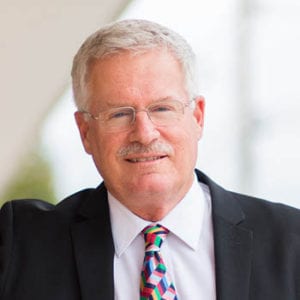Plan smart to retire smart
Plan smart to retire smart

Earl Schultz, ChFC, CLU • Birdsboro, PA
Strategic Wealth Advisory, LLC • USA Financial Securities Corp.
Read full biography below
Proactive Advisor Magazine: Earl, talk about your service philosophy in working with clients.
We are a family-owned, independent financial advisory and planning firm that specializes in retirement planning. We tell clients that investing is only one portion of a financial plan, which is why we are fully engaged in understanding the unique financial needs of each individual or family we work with. We believe that financial education needs to come first, and we spend the time necessary to make sure each client understands the concepts and strategies inherent in a suitable plan that helps them meet their long-term objectives.
We work with our clients to develop comprehensive financial plans after going through an extensive discovery and goal-setting process. Then, and only then, will we suggest the investment products that we believe are best to implement. Financial education and comprehensive planning are at the core of every step we take in the planning process.
What is your philosophy for retirement-income planning?
I have two simple phrases I use with clients that accurately sum up how we approach retirement planning. The first is “Plan Smart to Retire Smart.” The second is “Plan First, Invest Second.” I think many clients who have not been through a comprehensive financial-planning process before believe the focus should be on achieving the highest investment returns they can get.
Of course, we all want competitive returns on our assets, but our role goes so much further and deeper than that. My first career was as a structural engineer working on important design projects, primarily in the nuclear energy field. I share my story with clients and how those types of projects required rigorous planning for months or years before any thought was given to the actual construction of a facility.
But even simpler projects such as building a new home require extensive planning, analysis of the construction challenges, blueprints, and a skilled architect. I ask clients, “If you wanted to design and build a new home for your family, would your first step be to go out and buy truckloads of building materials of all kinds?”
Of course, people say, “No. That would be ludicrous. You could not possibly end up with the right types or amount of building materials.” But that is essentially what many people do in retirement planning on their own. They establish various investment accounts, with different types of investment or insurance products, without truly having a master plan. That is what we are here to help them with. We can act as their guide through the many facets of retirement planning. That concept really resonates with people.

What are some of the issues people face in retirement planning that they might not be aware of?
I talk in my educational seminars and workshops about the critical challenges that people need to be aware of when they are thinking about retirement planning. Essentially, people focus on one broad question when they think about their retirement: “Am I going to be OK?” What we do is break that all-encompassing concern down into seven components or challenges.
The first is choosing the right Social Security strategy—that can mean tens of thousands of dollars of additional retirement income.
The second challenge is income planning. When you, the client, were working, you had a sustainable, reliable, predictable income that you could count on. Now you have to create your own paycheck, and it has to be just as reliable and sustainable as it was before.
There are two specific threats to that retirement paycheck, and they are the third and fourth challenges. One is sequence-of-returns risk. Very few people have heard of that. I go through a mathematical example of sequence-of-returns risk and how it can impact one’s investment portfolio. This has been identified as probably the largest threat to future retirement income.
The other threat is inflation risk, our fourth challenge. Most of the people we’re dealing with remember the double-digit inflation and high interest rates of the late 1970s and early 1980s very well. Inflation is cyclical. We don’t know what it’s going to be, but it’s probably still going to be cyclical. A client’s retirement income should be able to grow in sync with longer-term inflation trends.
Number five is how should a client’s plan approach risk management? Retirees cannot afford to take 20%–40% hits to their portfolio, but they still need the asset growth of investments to fund retirement income. This is a key concept for what we do on the investment side, recommending some use of actively managed strategies that can help mitigate volatility and downside exposure during poor equity markets.
The sixth challenge concerns developing strategies for minimizing taxable income exposure in retirement and tax strategies for legacy planning. The final challenge covers the broad area of “what ifs” and is closely related to risk management, but not necessarily in an investment sense. Do clients have sound plans around insurance coverage in case of a death of a spouse, provisions for long-term care, access to emergency funds if needed, and so forth? We try to think through unforeseen circumstances and build contingency strategies into the overall financial plan.
How does your process address these challenges?
One way I explain the process to clients is by giving the analogy of mountain climbing. Most people grasp the concept that an enormous amount of planning goes into the ascent of a difficult mountain peak. But they do not think about the fact that professional climbers conduct similar rigorous planning for the descent of that mountain—this is where many serious accidents occur. I tell clients that their accumulation years were like climbing the mountain, and their distribution years are like coming down the mountain.
“Financial education and comprehensive planning are at the core of every step we take in the planning process.”
People have to be well-prepared for the different challenges they are going to face. Most of the industry is focused on the accumulation years, in my opinion, and we focus on the distribution side or downside of the mountain. We design a plan before we do any investing, a full plan that considers all seven of the unique challenges I outlined. We show clients how to mitigate risk in each of these areas and develop a plan that is designed to fulfill their specific retirement goals.
We use a proprietary planning methodology and software called the Asset Cycle Portfolio System. The process of formulating a predictable and reliable income stream with the goal of long-term sustainability is addressed via this methodology. While it sounds complicated, it is simple to grasp conceptually for clients. The asset-cycle planning system is a time-based methodology that analyzes many factors for clients, and five in particular: time horizon, income needs, assets and available income streams, legacy goals, and risk tolerance.
 Working from these parameters, assets and investments are used differently at different points in time. The first time-based segment of their investment plan will attempt to take on very little risk for about a period of five years, and we have several conservative strategies to execute there. The next segment of the plan can take on a little more risk for years six through 10, and here we tend to employ strategies that have a heavy risk-management component. There are many strategic solutions available, including absolute-return strategies, managed fixed income, and sophisticated sector-rotation or trend-following strategies. The key is that, generally, they all will attempt to avoid steep drawdowns and can respond tactically to the current market environment. The third and fourth longer-term segments of the investment plan are more growth-oriented and can look for higher returns in line with a client’s risk profile. Over time, segments or cycles of the plan rotate to take over the place of an earlier segment, essentially keeping each segment continually replenished.
Working from these parameters, assets and investments are used differently at different points in time. The first time-based segment of their investment plan will attempt to take on very little risk for about a period of five years, and we have several conservative strategies to execute there. The next segment of the plan can take on a little more risk for years six through 10, and here we tend to employ strategies that have a heavy risk-management component. There are many strategic solutions available, including absolute-return strategies, managed fixed income, and sophisticated sector-rotation or trend-following strategies. The key is that, generally, they all will attempt to avoid steep drawdowns and can respond tactically to the current market environment. The third and fourth longer-term segments of the investment plan are more growth-oriented and can look for higher returns in line with a client’s risk profile. Over time, segments or cycles of the plan rotate to take over the place of an earlier segment, essentially keeping each segment continually replenished.
The core concept is to keep a client’s money working in an effective and efficient manner over the course of retirement. With this planning tool, we can illustrate many different hypothetical scenarios for clients and provide a clear road map to funding their retirement-income needs, planning for their legacy objectives, and developing plans for “what if” scenarios.
One of the chief benefits of our overall planning methodology and approach to investment planning is helping clients to deal better emotionally with the ups and downs of the markets. Risk management is built into the time-based approach itself, as well as being found in many of the active or tactical strategies that we recommend for clients.
When there is a “scare” in the market, such as the Brexit situation, we can communicate to clients that this is exactly why their investment strategies are set up the way they are. It provides a very effective foundation for managing client expectations and helping clients to stick with their investment plan over the long term. We believe this approach to planning is a key differentiator for our firm and one that has helped lead to strong and enduring client relationships.

Increasing your advisory practice’s visibility
Earl Schultz’s growth plan for his firm, Strategic Wealth Advisory, LLC, includes public relations, advertising, and publishing educational content to heighten exposure to his target audience. Here are a few of his strategies:
1. Co-authoring the book “You’re in Control: Planning the Most Important Retirement in the World—Yours.”
2. Running TV ads in local media markets and developing direct-mail programs to drive attendance at financial education seminars.
3. Giving interviews for local newspapers and prominent industry podcasts.
4. Using a public relations specialist to obtain quotes and features in national media such as U.S. News & World Report, TheStreet.com, Financial Advisor, and an upcoming issue of The Wall Street Journal.
Earl Schultz is the founder and president of Strategic Wealth Advisory, LLC, which has offices in Birdsboro and Allentown, Pennsylvania. A seasoned educator and public speaker, Mr. Schultz has been in the financial industry for more than 20 years. He holds the designations of Chartered Financial Consultant (ChFC) and Chartered Life Underwriter (CLU). Mr. Schultz says his passion is “teaching and implementing strategies designed to help clients realize greater success in their retirement years.”
A graduate of Penn State University with a degree in civil engineering, Mr. Schultz’s first career was as a structural engineer working on the design of nuclear and fossil-fuel power plants, hospitals, airports, and other projects. He says his desire to “have a more direct and personal impact on the lives of individuals” led him to the financial industry.
Mr. Schultz was a contributing author of the book “You’re in Control: Planning the Most Important Retirement in the World—Yours.” He has been quoted in U.S. News & World Report, TheStreet.com, Financial Advisor magazine, and several other national publications. He is a member of Ed Slott’s Master Elite IRA Advisor Group and has studied business development with several nationally recognized coaches.
Mr. Schultz and his wife, Debbie, were high school sweethearts and have two grown children and five grandchildren. Mrs. Schultz is the office manager for Strategic Wealth Advisory. They enjoy spending time with their family, travel, gardening, and creating aquatic waterscapes. They are active in their local church and serve as ambassadors for the Alliance Defending Freedom, a nonprofit organization.
Disclosure: Earl Schultz is an investment advisor representative of, and securities and advisory services are offered through, USA Financial Securities Corp., member FINRA/SIPC. A registered investment advisor located at 6020 E. Fulton St., Ada, MI 49301. Strategic Wealth Advisory is not affiliated with USA Financial Securities.
Status as a member of Ed Slott’s Master Elite IRA Advisor Group does not imply a certain level of skill.
Plan First, Invest Second and Asset Cycle Portfolio System are registered trademarks of USA Financial Media.
Photography by Michael Branscom


